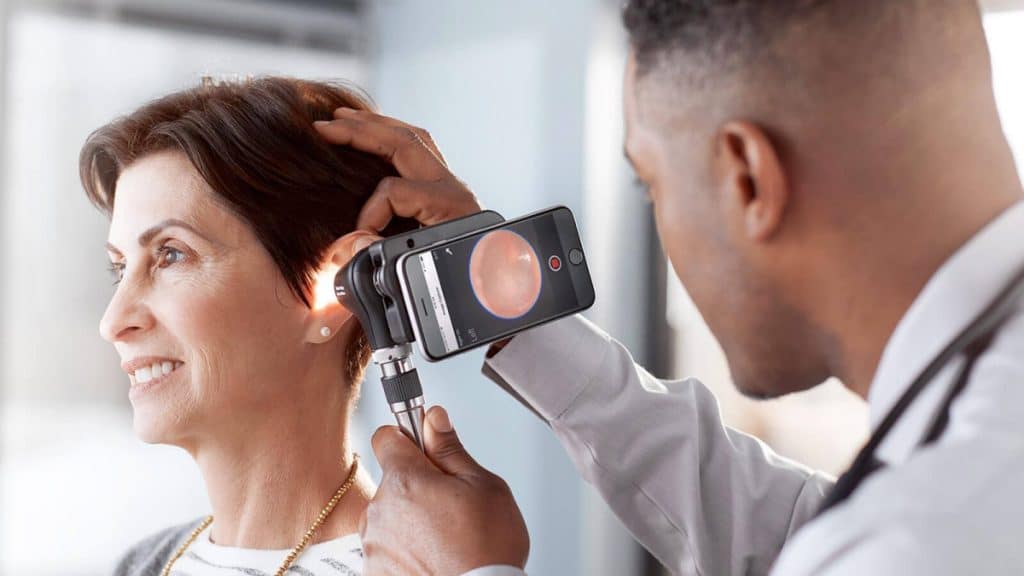When it comes to maintaining optimal hearing health, audiologists and hearing specialists rely on advanced tools to accurately assess and diagnose various conditions. Two of the most indispensable devices in their toolkit are audiometers and otoscopes. These instruments play a pivotal role in diagnosing hearing loss, ear infections, and other ear-related issues that affect patients of all ages. In this blog, we will explore why these tools are so critical for audiologists and ear care specialists, shedding light on their functions and importance in everyday practice.
What is an Audiometer?
An audiometer is a specialized device used to evaluate a person’s hearing ability. It measures the sensitivity of hearing across different frequencies and intensities, helping audiologists identify the degree and type of hearing loss. Audiometers are commonly used in hearing tests such as pure-tone audiometry, where patients respond to tones at various pitches and volumes. The results from these tests are recorded on an audiogram, which provides a visual representation of a person’s hearing thresholds.
There are several types of audiometers available, ranging from portable units for quick screenings to more advanced clinical devices. Each type offers unique features designed to meet the specific needs of hearing care specialists. A quality audiometer can provide precise data, allowing audiologists to tailor their treatment recommendations, including hearing aids, cochlear implants, or other hearing solutions, based on the individual needs of the patient.
If you’re interested in exploring different and high quality audiometer options, visit this dedicated page on audiometers for a range of products suitable for various clinical and portable applications.
The Role of Otoscopes in Ear Health
While audiometers focus on measuring hearing ability, otoscopes serve a different, yet equally essential function in ear care. An otoscope is a handheld device used to visually examine the ear canal and eardrum (tympanic membrane). With a bright light and a magnifying lens, the otoscope allows specialists to detect abnormalities such as ear infections, wax buildup, perforations, or fluid behind the eardrum.
Otoscope examinations are often the first step in identifying the root cause of hearing loss or discomfort. For instance, a blockage caused by earwax can be easily spotted and removed, potentially restoring hearing without the need for further interventions. On the other hand, more serious conditions, such as middle ear infections, can be diagnosed promptly, allowing for timely treatment. Otoscopes are not just diagnostic tools; they are essential in ensuring accurate ear health assessments and guiding further steps in patient care.
For a variety of high-quality otoscopes that provide clear and reliable imaging, visit otoscopes and lights page.
How Audiometers and Otoscopes Work Together in Hearing Care
Audiometers and otoscopes may serve different functions, but they complement each other perfectly in the world of hearing healthcare. An otoscope allows audiologists and ear care specialists to start with a visual inspection of the ear. This initial step is crucial in identifying physical issues, such as ear infections or blockages, which can affect the accuracy of hearing tests.
Once the physical examination is complete, the audiometer comes into play. If no external issues are detected with the otoscope, hearing tests using the audiometer can begin. The audiometer provides detailed information about a patient’s hearing abilities across a range of frequencies, helping specialists determine the next steps in treatment. Together, these tools ensure a comprehensive approach to ear health, from diagnosis to treatment recommendations.
For instance, if an otoscope detects an ear infection, treatment may involve medications, and the audiometer could later confirm if the patient’s hearing has returned to normal. In cases where no infection or blockage is found, the audiometer results will help identify whether hearing aids or other devices are necessary.
Why Are These Tools Essential for Audiologists?
For audiologists and hearing specialists, audiometers and otoscopes are invaluable in providing top-quality care. These tools help ensure accurate diagnosis, which is the foundation of any successful treatment plan. Audiologists rely on audiometers to assess the severity of hearing loss, while otoscopes help them detect visible issues that may be contributing to the problem.
Incorporating both tools into routine hearing assessments allows specialists to offer a more holistic approach to patient care. Whether it’s identifying early signs of hearing loss or treating an ear infection, audiometers and otoscopes enable hearing specialists to give their patients the best possible outcomes. Without these devices, diagnosing hearing problems would be far more difficult, potentially leading to delayed treatments or incorrect interventions.
Conclusion
In the field of audiology, audiometers and otoscopes are essential tools that work hand-in-hand to provide a complete picture of a patient’s ear health. Audiologists, ear care specialists, and hearing professionals rely on these devices to accurately diagnose and treat hearing loss and ear-related conditions. From examining the ear canal with an otoscope to measuring hearing sensitivity with an audiometer, these tools are indispensable in ensuring patients receive the best care possible.
